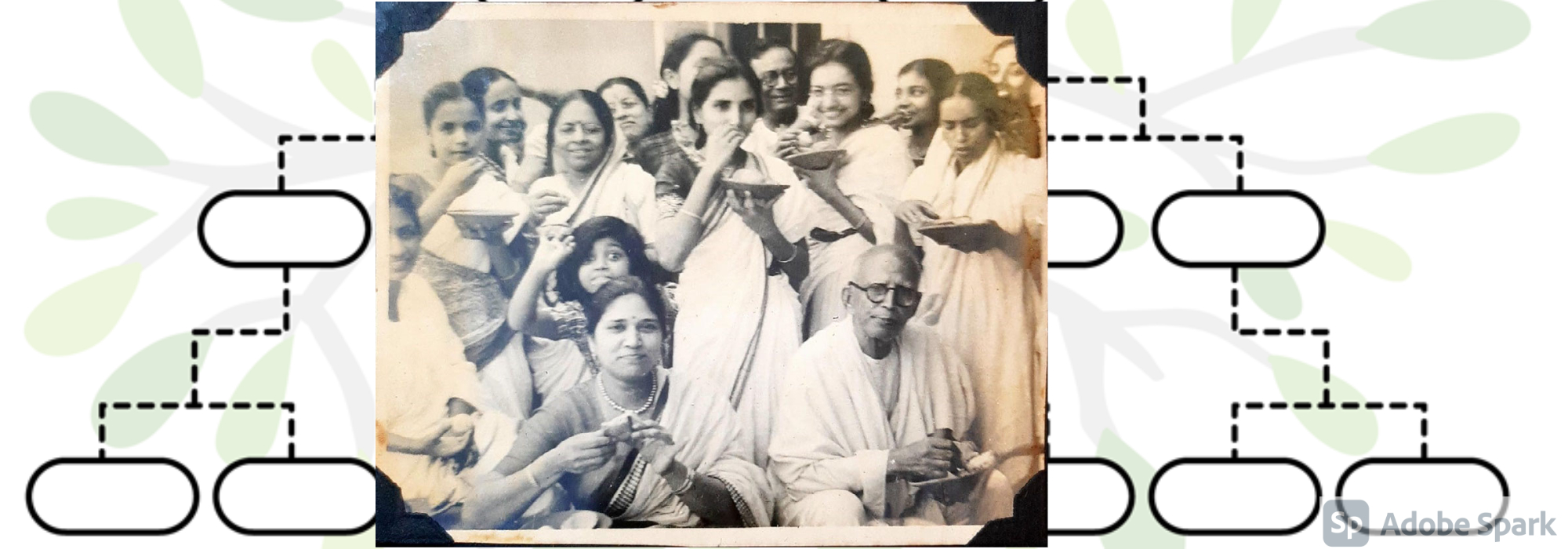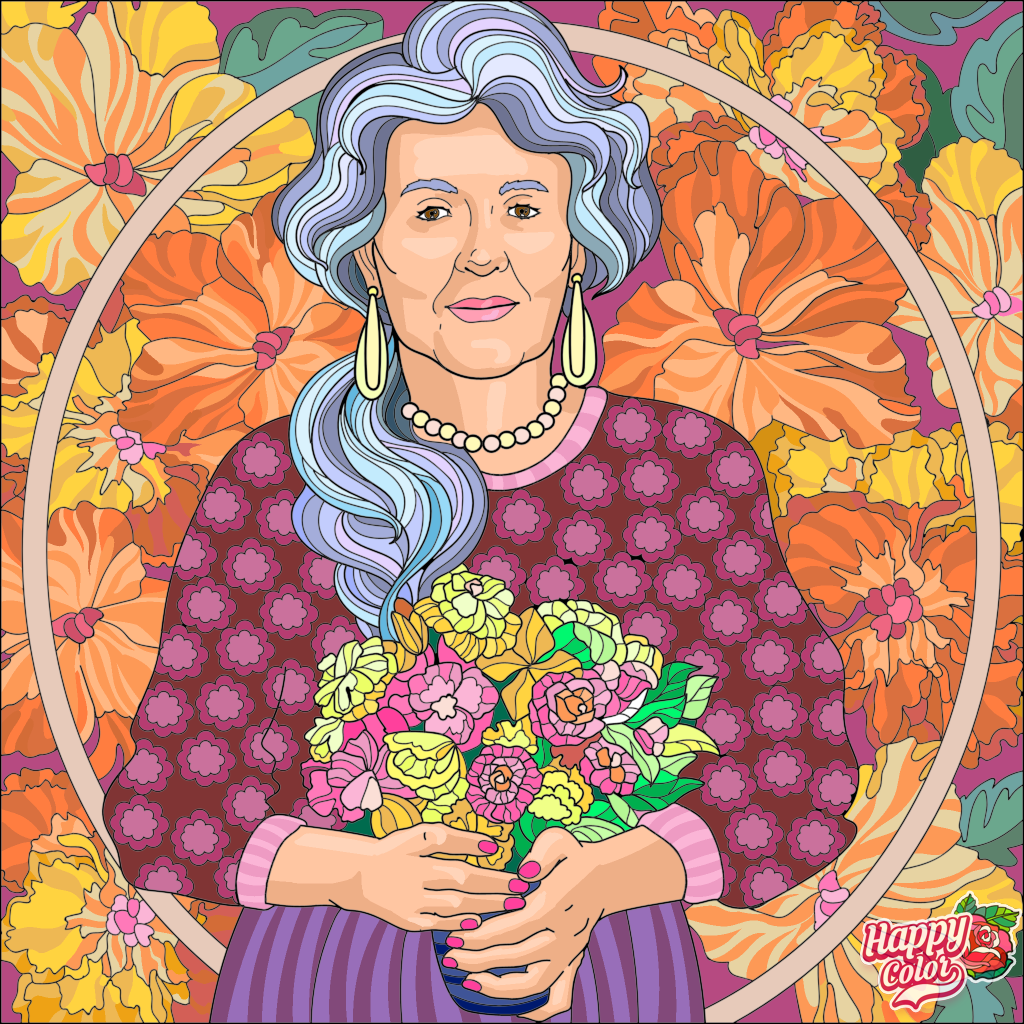“I have a family.”
“That’s nice dear. But doesn’t everybody?”
“Yes, they do. But my family is more like a clan.”
“Oh, I see. You have a lot of uncles and aunts and cousins?”
“Yes. Right. But I also have a number of great aunts and great uncles and I can trace my genealogy through five generations of female line.”
“You mean to say that you really know the name of your mother’s mother’s mother’s mother? How? Have you all lived in the same Calcutta neighbourhood for a century and half?”
“No way. My grandmother’s grandfather was in Burma with his family, where my grandmother also went to school. Then during the Second World War the family scattered over current Bangladesh, Assam and West Bengal – finally one pivotal part settling down in Shantiniketan right after the Partition, where other members of the clan gravitated. Some settled down there immediately, a few others built their country houses much later and the other members of the family kept visiting from time to time.”
*** *** *** *** *** *** *** *** *** *** *** *** *** *** *** ***
From my early childhood, I was accustomed to go to a cottage in Bolpur. A small brick house with thatched roof, situated in a large ground, quite away from the main road. This was my mother Jana’s maternal uncle’s house, Mamabari. I do remember some cows were kept somewhere at the back of the house and a few poultry. There I learnt first that newly-laid eggs are soft, you need to handle them with care. The toilet facility was outside and had no direct water supply. In fact, there was no direct water supply anywhere in the house. There was a well next to the bathroom. You draw water from the well and empty the bucket at a water receptacle which fills up the cement water tank, chaubachchha, inside the bathroom. Since I was too small then, perhaps five years old, I was not allowed near the well area, and anyway, my hands would not reach the pully rope. So, equally naturally, it was a forbidden pleasure to peep into the depth.
There was another house a little farther away, which was built more robustly. A one-storied house with a round verandah of red cement with low seats, and the ground even larger. There I remember one very old person lying in a bed. Jana used to call that person Talui Mashay, but it took me some time to realize how that person is related to me. I had realized early that my brain does not easily process the family relationships. It is said in Sanskrit that Nephews take after their Uncles (naranam matulakramah!). My uncle Kajal, does not have a direct nephew, since Jana is his only sister and I am Jana’s only daughter. So, I should have inherited his genes to store family network structure in my brain, right? Alas, that never happened!
Anyway, back to the very old person on the big bed. Most probably I saw him only once. He passed away in 1968 when I was hardly four years old. Much later, when I wondered, how is it that our family can trace its roots through so many generations and what is the secret cohesion that various branches have still kept in touch with one another, I realized that this person, Roy Bahadur Kshetra Mohan Basu, played a very pivotal role in gathering the branches together.
His life started like many other poor but meritorious students. In 1895 he passed B. A. with Honours in Mathematics and ultimately moved to Rangoon as a clerk in the British Census Office. In 1932 he retired as an Assistant Secretary but still continued to live in Burmah. By that time both his sons were working, the elder one an army physician, who later served as a member of the Medical Board of the President of India. KMB was from Faridpur, so it could have been inferred that after retirement he would opt to settle there. Perhaps because of his close association with British public service or his dis-association with Faridpur, he was in Burmah till 1942, experienced the Second World War and the Fall of Singapore. He knew about the riots in various parts of Bengal – and he decided to come to West Bengal. But where to? Calcutta was too crowded for him. His elder daughter-in-law was a friend of Amita Sen, mother of Amartya Sen. She suggested that KMB settles in Shantiniketan and arranged that he could be a tenant in Pratichi, till he can build his own house. The time was within a few years of Indian Independence, most likely 1948-49. That begins this family’s close association with Shantinitekan.
My great grand-mother Saibalini was KMB’s eldest child. She was married to Madhusudan Guha, who happened to be posted in various interior areas of current Bangladesh. As a result, their elder sons and daughters, which included my grand-mother Tunu, stayed in KMB household for studies. The time is probably early 1920’s. Possibly for this connection, Madhusudan liked to stay close to KMB. Once KMB settled in Shantiniketan, Madhusudan also bought land in Bhubandanga, Bolpur and built this thatched-roof house.
Madhusudan had a large family. Though sons and sons-in-law worked in various capacities in various places, two of them were stationed in Asansol-Burnpur area. Kolkata was also not far from Shantiniketan. My mother Jana recalls that, in her childhood, Bolpur was the only place to visit whenever there was any vacation. Several of her aunts, Madhusudan’s younger daughters, were only a few years older than her. KMB’s youngest grand-daughters were also about the same age. Hence in each visit the family ties strengthened through the flourishing gossips.
The Bhubandanga house was the center of family get-together till the house was sold, in 1980’s. There were two bedrooms in the house, and one tiny room in front. The rooms inside had two large bedsteads, which we occupied. We were high school or college going young ladies then. My aunts, who were between 15 to 5 years senior to me, used to come. The bedsteads could sleep three comfortably, but who cared? If three could sleep comfortably, then five or six could squeeze. During Poush Mela, it would be cold, really cold. So sleeping on your sides, sandwiched between heavy quilts and blankets, would actually be much more comfortable. Because the windows would not properly close and the doors could not be shut as other family members needed to pass through to go to the back of the house. But the quilts and blankets you have to bring.
I was talking about family. If you look at the various members gravitating towards the Bhubandanga house, the branch-wise distance would be difficult to explain. If I tell someone that some of my grand-mother’s cousin’s children, who are actually my aunts and uncles, are as close as cousins, she will be surprised. But this propagates in the next generation also. My nephew Bihan, likes to celebrate his independence when his parents are away, in company of his second cousins several times removed!
KMB family is like many other families, uprooted at the time of Partition. Till my grand-parents’ generation, they were all Bangals, from East Pakistan. From my parents’ generation, marriages happened between Bangals and Ghatis. My parents’ marriage is one case in point. Like many other families, they also struggled as they left their own home and came to West Bengal. Currently members of this family are spread across various countries, from U.S.A to Australia. But what is very unlike to other families, through individual efforts, information about the family members have been preserved. Regular visits to Shantiniketan act as catalysts to keep members together. There is a yearly Family Picnic arranged on the first Sunday of the year. Current size of the family is 250 members, including all deceased, through the seventh generation.
“Not bad, what say you?”





Comments